UNITED WE STAND
UPDATED: 12-24-2020
FIVE VIDEOS TO VIEW
(1) (*new*) THE MOST DANGEROUS JOB IN THE WORLD (*new*)
(2) ACTUAL AIRCRAFT CARRIER LANDING
(3) AIRCRAFT CARRIER PITCHING DECK IN HEAVY JAPAN SEAS
(4) FA-18 DEPARTING/LANDING AIRCRAFT CARRIER; PULLING SOME MODERATE "G's"
(5) FA-18 SNAPPING THE ARRESTING GEAR WIRE
SINKING OF THE AIRCRAFT CARRIER U.S.S. ORISKANY IN PENSACOLA, FL.
THE LARGEST ARTIFICIAL REEF IN THE WORLD
UNITED WE STAND



Welcome to my Home Page!
Present and previous Airline and
Naval aircraft flown, from 2002 to the
very beginning of 1965 where it all
started for me as a
Naval Aviator, and as a pilot.
Photograph as a Navy Commander

Original Midway Airlines Pilot Uniform (Captain) up to 1991
New Midway Airlines
(You can tell I LOVED this job)
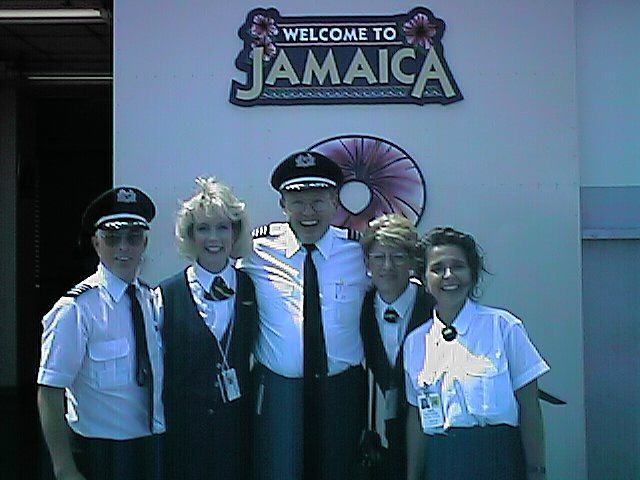
Airline and Navy aircraft Flown From 2002 to 1965
Boeing 737 (2000-2002)
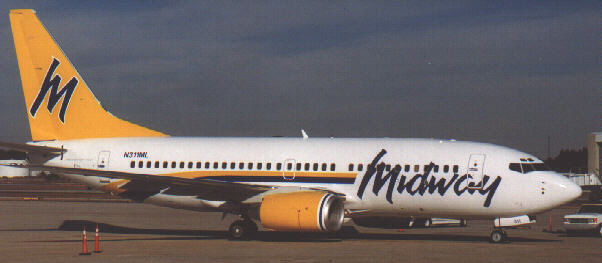
Fokker 100 (1993-1995; 1999-2000)
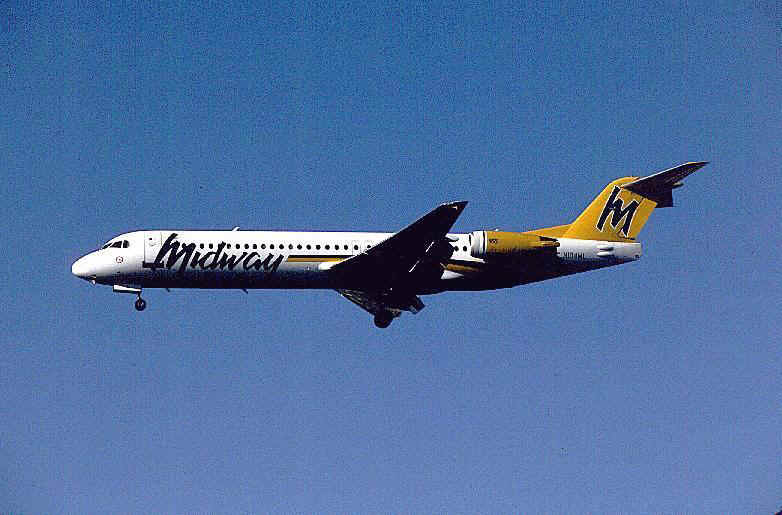
Airbus 320 (1995-1999)

Best aircraft that I ever flew (A320)
Boeing 747 (Tower Airlines 1992-1993)
*(new)* PLEASE VIEW THIS VIDEO TO GET THE IDEA HOW COMPLICATED

My first Commercial (DC-9) airline job was with the original Midway Airlines from 1986 to 1991.

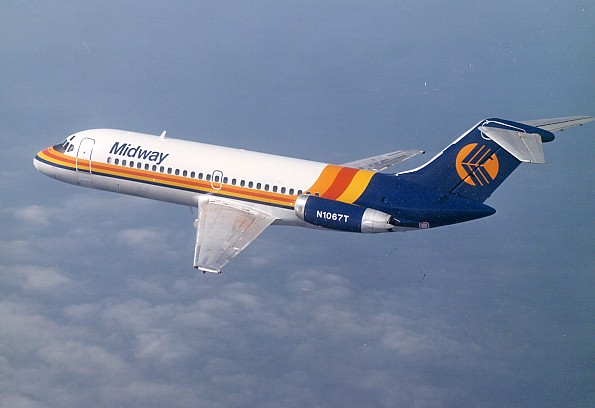
Military Career
I flew and instructed in the McDonnell Douglas C9B (DC-9) Skytrain II aircraft with VR-57 (San Diego) and VR-59 (Dallas) from 1977 to 1985. I flew the below aircraft many times while assigned to VR-57 as a Navy Pilot. It brings back many good memories. One of our many tasks for us to fly were "Pathfinder" missions, which involved providing the navigational platform for Marine Corps jets coming from a west coast station and then navigating them all the way to Japan. This had to be done over a 10 day period due to crew rest requirements and the requirement of having in-flight tankers for the tactical jets. We made many stops along the way (Hawaii, Wake Island, Guam Island) before reaching final destination at Okinawa, Japan. In Okinawa, we would take a few days off for crew rest and then double back the same way we came with the previous deployed Marine Corps aviation squadron. The cycle of deployments ranged from 4-6 months.
VR-59 was based in Grand Prairie, Texas (SW of Dallas). We flew transport missions for the Navy and also deployed to Europe to assist in transportation in the Middle East and European theater. I flew into Beirut, Lebanon airport approximately eight months prior (Oct 1983) to the Marine barracks getting blown up and killing all the service personnel (299), which included Marines, Sailors, Solders, plus French Military personnel. The military compound was on the North end of the airport. I bought a few things from local vendors. Security was not up to par. Approximately 3 months after I returned from that deployment, I was promoted Navy Commander (0-5). I retired in October 1986
VR-57
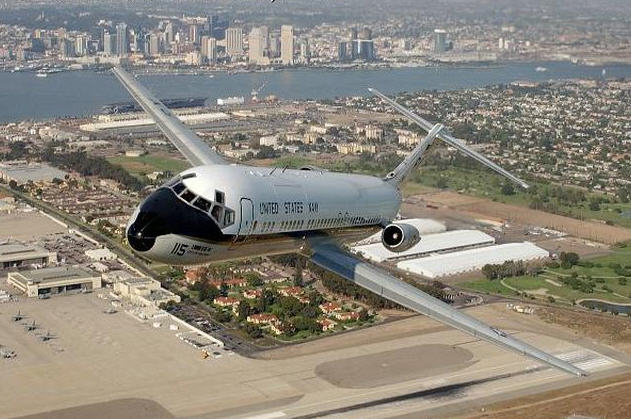
VR-59
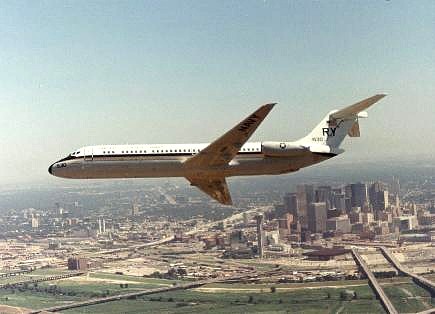
Typical "Pathfinder" with Marine Corps (McDonnell Douglas) AV-8B Harrier jets flying formation on our C-9B over the Western Pacific Ocean (aircraft were moved in for the picture taking).
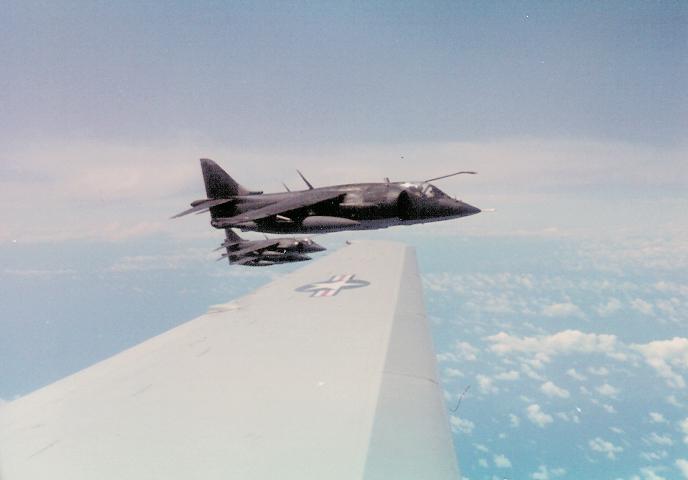
I flew the Grumman E-1B Tracer Airborne Early Warning radar aircraft on the following Aircraft Carrier's: USS Oriskany (CVA 34) [1975-1976]; USS Shangri-La (CVA 38) [1968-1969]; USS Randolph (CVS 15) [1968] And USS Essex (CVS 9) [1968]. Letter 'A' in the Aircraft Carrier designation number stands for battle attack carrier, and the 'S' for submarine attack carrier.

My last Navy cruise (seven months, 1975-1976) was on the USS Oriskany in the Western Pacific ocean where I finally capped off my total aircraft carrier landings to almost 500 before switching to a land based C-9B aircraft (DC-9). During this cruise, I won the award for "Best Carrier Landing Pilot" for my Detachment from the Commander of the Carrier Group (Landing grade of 3.96 out of 4.0 for the entire cruise).
"Best Carrier Landing pilot" award presentation from the Carrier Aviation Group (CAG) Commander (Rank of Lieutenant Commander, 1976).
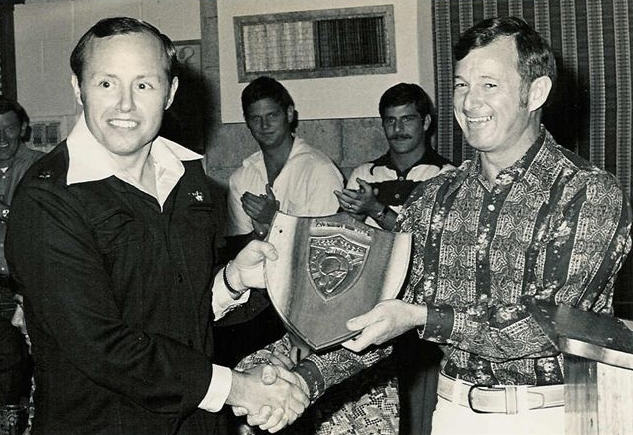
USS Oriskany (CVA 34) Aircraft Carrier.....
UPDATE: The USS Oriskany was sunk approximately 24 miles south of
Pensacola, Florida on the 17th of May, 2006 to be an artificial reef
It was emotional as I viewed the pictures of the sinking
The legacy will live on which is the upbeat of this event!
Click on this link to see the pictures and read the news release!

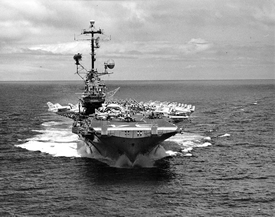
Here is a view that I would see during an approach to the aircraft carrier. The experience is like landing on a postage stamp! In the upper left hand corner of the picture is an enhanced presentation of the glide slope indicator which is anchored to the far left of the landing area (follow the guide lines to the deck to see where it is located on the landing deck). The green horizontal lights indicate "on glide slope" when the orange ball intersects the row of green lights. In this picture, the orange ball at the top indicates to the pilot that he is high or above the glide slope. The aircraft can still land but most likely the aircraft will catch the number four arresting wire instead of the number 3 wire.
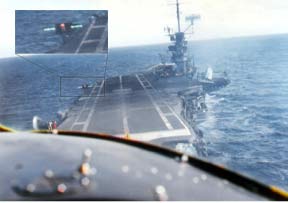
Typical Steam Catapult shot off a small size aircraft carrier
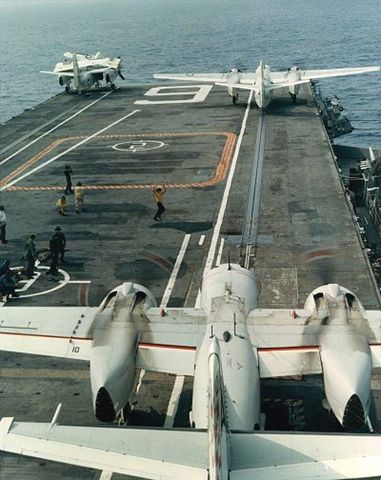
TYPICAL LANDING (CLICK ON BELOW LINK TO VIEW) AS SEEN THROUGH A S-3 VIKING TACTICAL JET AIRCRAFT. THE STARTING POINT OF THE APPROACH IS FLOWN AT 350 FEET ABOVE THE WATER UNTIL INTERCEPTING THE GLIDE SLOPE. THE REST IS SELF EXPLANATORY EXCEPT FOR THE LANDING. UPON TOUCHDOWN, THE AIRCRAFT COMMANDER GOES TO FULL THROTTLE UNTIL HE IS ASSURED OF GRABBING AN ARRESTING GEAR WIRE.
VIEW CARRIER LANDING FROM TACTICAL JET AIRCRAFT
This picture was taken aboard an Aircraft Carrier Ready Room on deployment. I think I was sea sick when the picture was taken (smile) (Rank of Lieutenant, Approximately 1972).

I flew the Grumman aircraft C-1A Trader "COD" (Carry Onboard Delivery) from 1972-1975 on board the Aircraft Carrier USS Lexington (CVT 16), a Training command Aircraft carrier. I became a Triple Centurion while assigned to the USS Lexington (300 aircraft carrier landings). This was the actual aircraft I flew aboard the USS Lexington called the
"Blue Ghost", which is on display at the Pensacola, Florida Naval Aviation Museum.

USS Lexington (CV 16) (shown as a battle carrier)
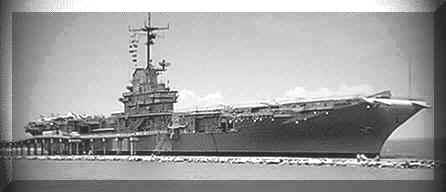
CONVERTED TO TRAINING CARRIER FOR PRACTICE LANDINGS AND TAKEOFFS

When ordered to the USS Lexington, I was assigned to the Operations department for experience building and to promote in rank. The below picture, given to me upon departing the command, reflects the assignments within the Operations department as the Photo Lab and Electronics Officer for the USS Lexington besides my other primary duty as the pilot to fly the USS Lexington's C-1. The Lexington would normally deploy for 3 out of every 4 weeks in the Gulf of Mexico. I would fly multiple trips with Aviation squadron support personnel and cargo on and off the ship when the Pilot's from Fleet and Training commands were performing practice Aircraft carrier landings and takeoffs. The landings and takeoffs, commonly called work-ups, were very essential for Naval Aviators before deploying to wherever in the world. Usually one or two weeks were afforded for the Fleet squadrons and one or two weeks for the pilots in Training command, whom needed to qualify, at that time, landing aboard an Aircraft carrier before being awarded their Wings of Gold as a Naval Aviator.
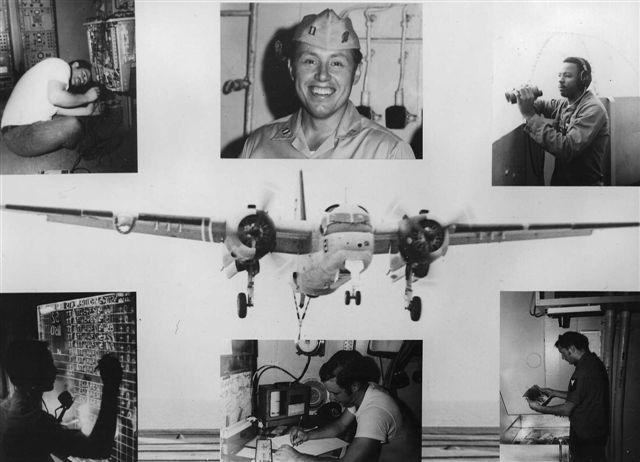
USS Shangri-La (CVA 38) Aircraft Carrier (bottom)
(top carrier is Independence)

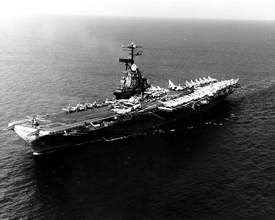
USS Randolph (CVS 15) Aircraft Carrier
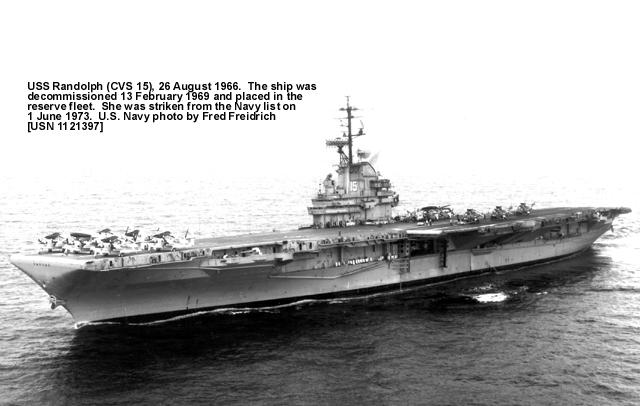

USS Essex (CV 9) Aircraft Carrier

I flew the Lockheed P2V Neptune aircraft one time, as a pilot, on a ferry flight from San Diego to Davis Montham AFB, AZ. (called the bone yard, 1970).
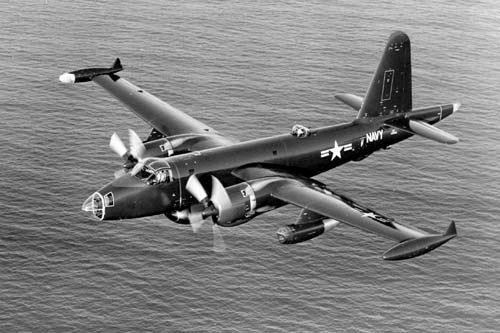
I flew the Grumman S-2 Tracker Submarine killer aircraft in the Advance Training command as a student pilot (March-August 1966). I performed 2 touch and goes and 6 arrested landings and takeoffs on board the USS Lexington aircraft carrier to receive my Wings of Gold in August 1966.
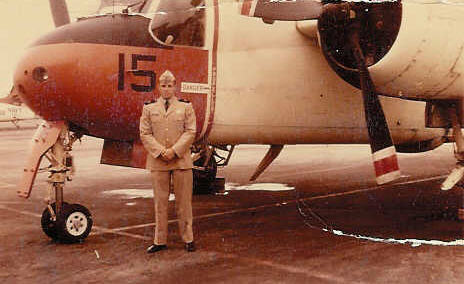
I flew the North American Aviation T28C and T28B Trojan aircraft as a student pilot (1965-1966). The below picture was taken right before flying out to the Aircraft carrier USS Lexington in the Gulf of Mexico (March 1966) for 2 touch and goes and 6 arrested landings and takeoffs. After receiving my Wings of Gold in August 1966, I returned to the Naval Aviation Training Command as a T-28 Formation Instructor Pilot (1966-1968) in Pensacola, Florida.
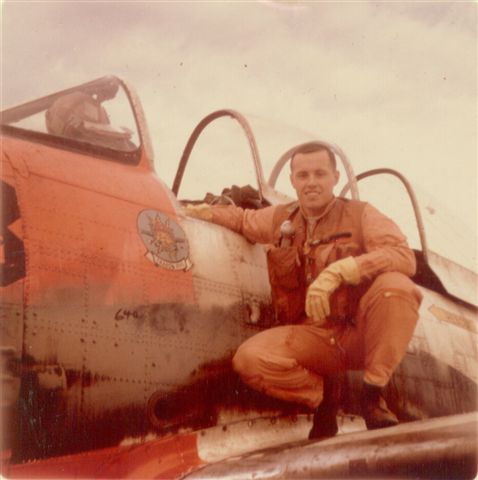
T-28B Formation flight departing from Milton (NE of Pensacola), FL. Navy Air Field.
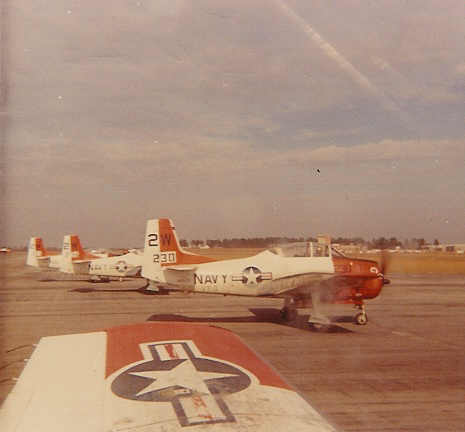
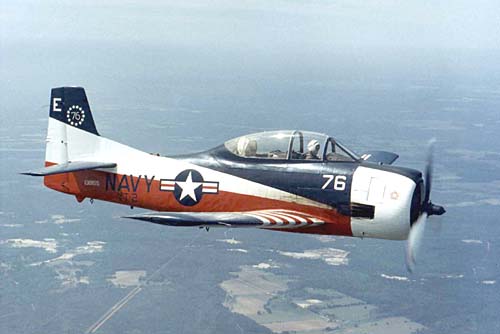
Flew the Beechcraft T34B Mentor aircraft as a student pilot in 1965 at Pensacola, Florida.
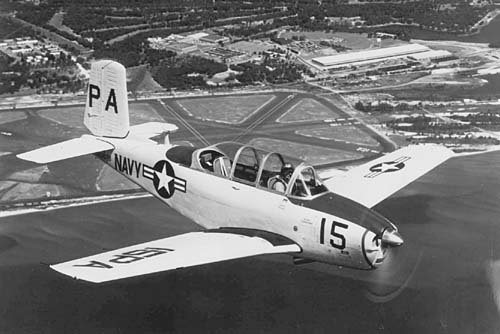
This is my class picture as a Naval Aviation Cadet taken in 1965 at Naval Air Station Pensacola, Florida.
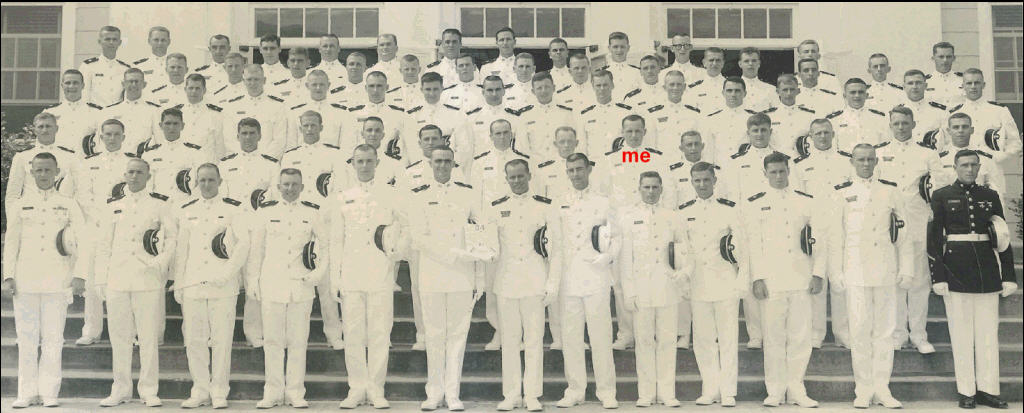
I hope you enjoyed the tour of my Airline and Naval Aviation careers.
"Pilot Humor"
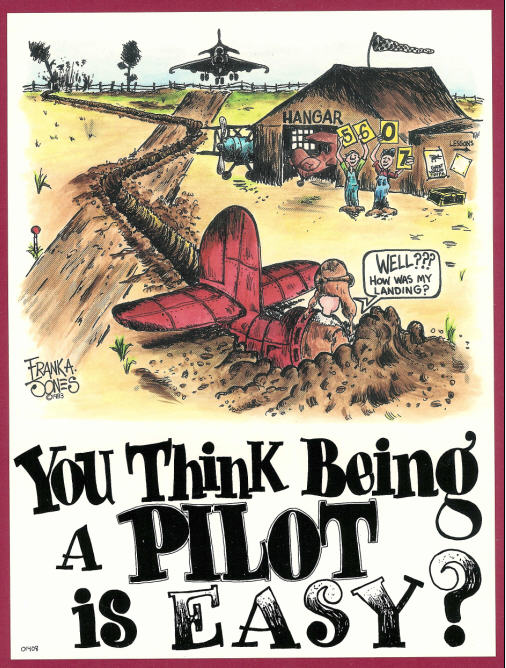
Regards,
Donald Proctor
Commander, USNR (Retired)
Midway Airlines Captain (Retired)